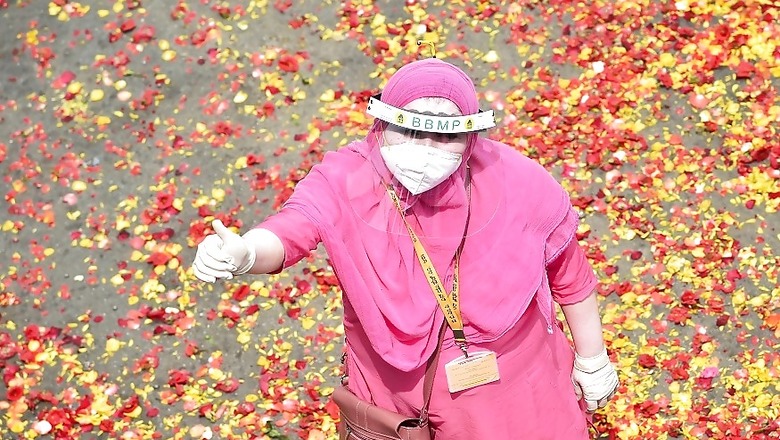
views
With the fourth-highest population and as the second largest city of India, Bengaluru is one of the most diverse and cosmopolitan places in the country. Yet, as most of the major Indian cities struggle to curb the spread of the Covid-19 infection, the IT capital of India is an astonishing exception.
Bengaluru has reported just 188 cases (including Bengaluru Rural) of Covid-19 so far. To put this number into perspective - Mumbai has almost 80 times the number of infections at 14,899, Delhi has 40 times with 7639 cases, Ahmedabad has almost 34 times at 6353 and neighbouring Chennai has 26 times with 4888 cases.
Bengaluru has reported less number of cases than not only all other big metropolitan cities but also most of the other major towns and state capitals of the country. In terms of number of cases, it ranks at number 46 among all the cities in India.
It has less number of cases than the likes of Kanpur, Amritsar, Lucknow, Nagpur, Jalandhar, Ajmer, Meerut, Udaipur and even Saharanpur. In a list of 25 prominent cities (in the creative below), Bengaluru has the sixth-lowest number of cases in India.
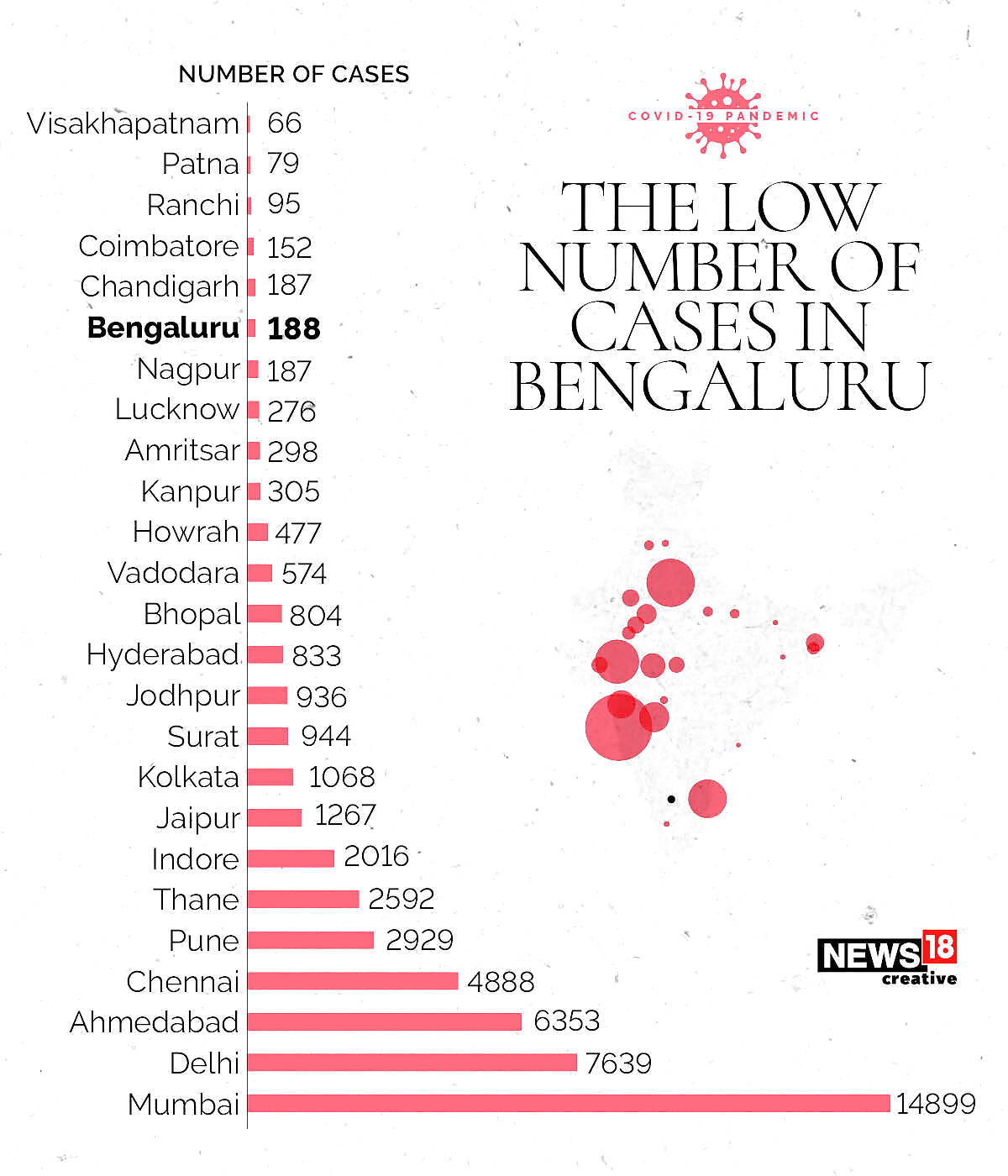
A low number of cases, in turn, means low mortality numbers. Bengaluru has reported just 8 coronavirus deaths so far. In comparison, Hyderabad has 25, Chennai (44), Jaipur (60), Delhi (86), Kolkata (135), Pune (158), Ahmedabad (421) and Mumbai (556).
Is Bengaluru an aberration? What has the city done right to contain the virus so efficiently?
According to B.H. Anil Kumar, Bruhat Bengaluru Mahanagara Palike’s (BBMP) Commissioner, Bengaluru has been successful in controlling the spread of the virus because of its early and effective lockdown. Schools were ordered to close from March 13. The city, famously known as the ‘Pub Capital’ of Asia, not only shut down its bars and restaurants but also malls, theatres and other public places as early as the March 14 – 11 days before the nationwide lockdown and much before most of the other cities in the country.
The death of a 76-year-old man, who had returned from Saudi Arabia in February end, from Kalaburgi on March 12, the first Covid-19 death in India, could have been the trigger that prompted the government in Karnataka and the civic authorities in Bengaluru to act swiftly and decisively.
If Bengaluru is an exception amongst the cities, then Karnataka is an exception among the states. With less than 1,000 cases, it stands out among the prominent big states of India – Maharashtra (24,427 cases), Gujarat (8,903), Tamil Nadu (8, 718), Rajasthan (4,126), Madhya Pradesh (3,986), Uttar Pradesh (3,664), West Bengal (2,173) – all have reported a higher number of cases than Karnataka. Even Jammu and Kashmir with 934 cases has more Covid-19 cases than Karnataka (925).
The success mantra of the three Ts – trace, test and treat – worked wonders – both for the state and its capital city. The BBMP’s proactive and methodical approach went a long way in containing the spread of the virus. After cordoning off the entire area which reported a positive case, all the entry and exit points except for emergency were shut. Separate teams were formed to track down primary and secondary contacts, all of whom were quarantined.
This was followed by random testing in the area where the patient lived – this two-pronged strategy of containment zones and random sampling went a long way in checking the spread of infection in the city.
Teams were also formed for monitoring those who were quarantined at home. At the state level, 15 special teams, each led by a senior officer monitored different aspects of the virus, its management and containment.
At the beginning of May, the BBMP decided to carry out a massive door-to-door check-up drive in Bengaluru, planning to screen around 25 lakh families in the 198 municipal wards in the city. Testing was expanded to include those with Severe Acute Respiratory Illness, Influenza-like Illnesses, secondary contacts of patients and symptomatic health workers.
Some of the other measures included real-time information on positive case movement up to 14 days prior to testing positive on corona watch mobile hall, heat maps and a quarantine app to monitor those in isolation.
IT companies had to provide a list of all employees who travelled to virus-hit countries after February 21 and international flights were stopped from the city airport from March 22. Government medical colleges were converted into war rooms in 19 districts while in others, private hospitals were roped in.
Bengaluru is on its way to becoming the first major city outside the state of Kerala to flatten the curve. However, the authorities are wary of a second wave and are not taking any chances.
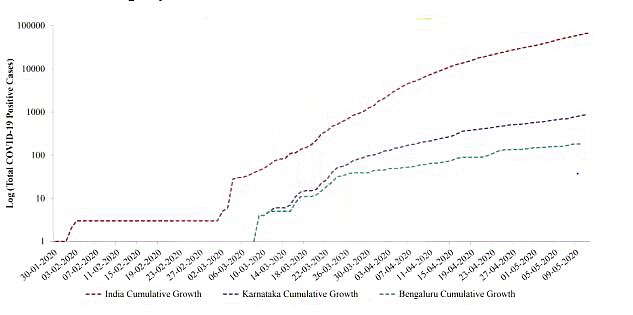
Random testing continues in containment areas. The BBMP Commissioner stated that the city is now testing all the residents in Padarayanapura – a hotspot in the West Zone of Bengaluru, which has reported 49 cases so far.
As on May 12, 8 of the 10 Zones in Bengaluru have flattened the curve, while Bommanahalli with a total of 50 cases, has reported no new cases in the last 5 days. The only area of concern is the West Zone with 65 cases and a rising curve.
In terms of the number of Wards, as many as 148 of the total 198 wards in Bengaluru have no cases, 32 wards have one case each while 6 wards have 2 cases each. There are essentially just two wards that account for 87 of the total number of cases – Padarayanpura with 49 cases and Hongasandra with 38 cases.
Although, the city of Bengaluru has been declared a Red Zone/Hotspot by the Union Government, almost 75% of the city (in terms of Wards) does not have a single case as on the May 12.
So far, Bengaluru has conducted 12,629 tests, which means the city’s tests/case ratio is 68 and tests/death ratio is 1579. The national average stands at 25 and 760. Out of the 188 cases in Bengaluru, 88 have already recovered and the city’s Recovery Rate of 47% is one of the best in the country.
If Bengaluru can escape a second wave and contain the spread of Covid-19 as effectively as it has done so far, then this will surely be one of the biggest success stories of the pandemic in India and perhaps anywhere in the world.










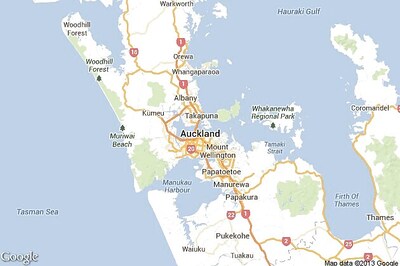

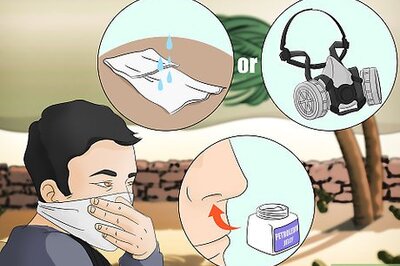



Comments
0 comment